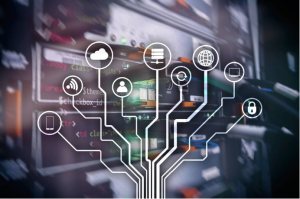Explore the intersection of edge, artificial intelligence and the Internet of Things
Explore the intersection of edge, artificial intelligence and the Internet of Things
“Data is a new oil”, which has appeared on the corporate chief information officer’s radar for more than 15 years. Since then, corporate data stack has developed to support complex business intelligence missions. Recently, in December 2022, due to Open AI’s ChatGPT, we once again witnessed the structural transformation.
Explore the intersection of edge, artificial intelligence and the Internet of Things
When the opportunities brought by these transformations are obvious, machine learning (ML) and artificial intelligence (AI) have changed the data stack of enterprise IT and OT in index, and at the same time provide new tools for digital transformation. At the same time, we have witnessed the maturity of the IT architecture and the use of marginal technology, thereby boldly declared that “the edge is covering the world!”
At the same time, computer vision and the Internet of Things (IoT) are combining and subverting this pattern. This article will explore these revolutionary markets to adopt the opportunities and methods of paradigm cross points.
Chance
At the intersection of edge, artificial intelligence, and the Internet of Things, many use cases and opportunities have been determined, including:
• Preventive maintenance: Preventive maintenance based on artificial intelligence, especially in manufacturing, is an important case of the above -mentioned cross points. According to the results of the research, this opportunity is more than $ 500 billion in global scale. In this case, it is a vital ability to deal with the ability of multimedia and detect abnormalities to enhance human decision -making at the edge.
• Video analysis: This involves using AI and ML to know others/objects and its surrounding environment, and make intelligent decisions. Some of them include smart cities, smart offices, smart retail stores, construction sites and manufacturing environments. According to a report from McKinsey, by 2025, China’s economic scale is expected to reach at least $ 4 trillion.
• Other applicable areas: including automatic systems, energy management, remote monitoring, remote testing, and advanced driving assistance systems (based on laser radar), as well as smart video and image recognition applications in medical care.
Although the potential market and economic scale of this intersection is remarkable, it is even more interesting that it is expected that by 2027, China’s compound annual growth rate will be close to 30%.
method
Any market transformation and use of paradigms will go through a mature curve. During this period, various friction areas have been solved by systematically. At the intersection of margins, artificial intelligence, and the Internet of Things, many ecosystems can interact with the nature of the same nature to create persistent value. These include:
• Edge infrastructure: The demand for shared passive data center infrastructure and active multi -tenant hardware infrastructure has been fully understood. Moreover, a group of new participants are welcome this challenge, including signal tower companies and hosting service providers.
• Reliable connection: Considering the many platforms that need to exist at the same time, the importance of super reliability and low delay connection cannot be underestimated. This is now a requirement for 5G standards. Dedicated 5G is that service API products are solving target challenges in this area. In addition, considering the API priority method, enterprises can control and customize their connection needs faster.
• Edge data arrangement: This challenge is the core of edge and artificial intelligence superposition. As we all know, the IT and OT teams are processing the torrent of data on all layers of cross -stacks. In addition, the use of marginal technology will face distributed arrangements. The new marginal native data pipeline architecture is solving this challenge.
• Artificial Intelligence Model: With the emergence of genetic artificial intelligence based on basic models, artificial intelligence methods applied to computer vision and the Internet of Things have opened up new exploration and innovation routes. This is an active and dynamic solution.
• Programmable and developer ecosystem: The developer’s priority movement has created a dynamic economy. Through his own methods and consumer -based “service” models bring a better unit economy. In addition, the programmable edge API provides a variety of possibilities for enterprise IT, which can control and customize various ecosystem participants.
Although there are many challenges, many challenges are solved by developer ecosystems that have achieved continuous and practical results in all aspects.
https://oaicon.com/index.php/2023/03/08/explore-the-intersection-of-edge-artificial-intelligence-and-the-internet-of-things/
Summarize
New disruptive technologies in the fields of artificial intelligence, marginal technology, computer vision and the Internet of Things have brought a lot of market opportunities and also brought some friction areas that need to be solved by new methods. The edge -programming AI and edge, that is, the service market model, and the method of priority of API and developers are starting to democrate this field. Although these achievements are real, they still need to continue to invest in innovation and developers’ priority cooperation methods.





